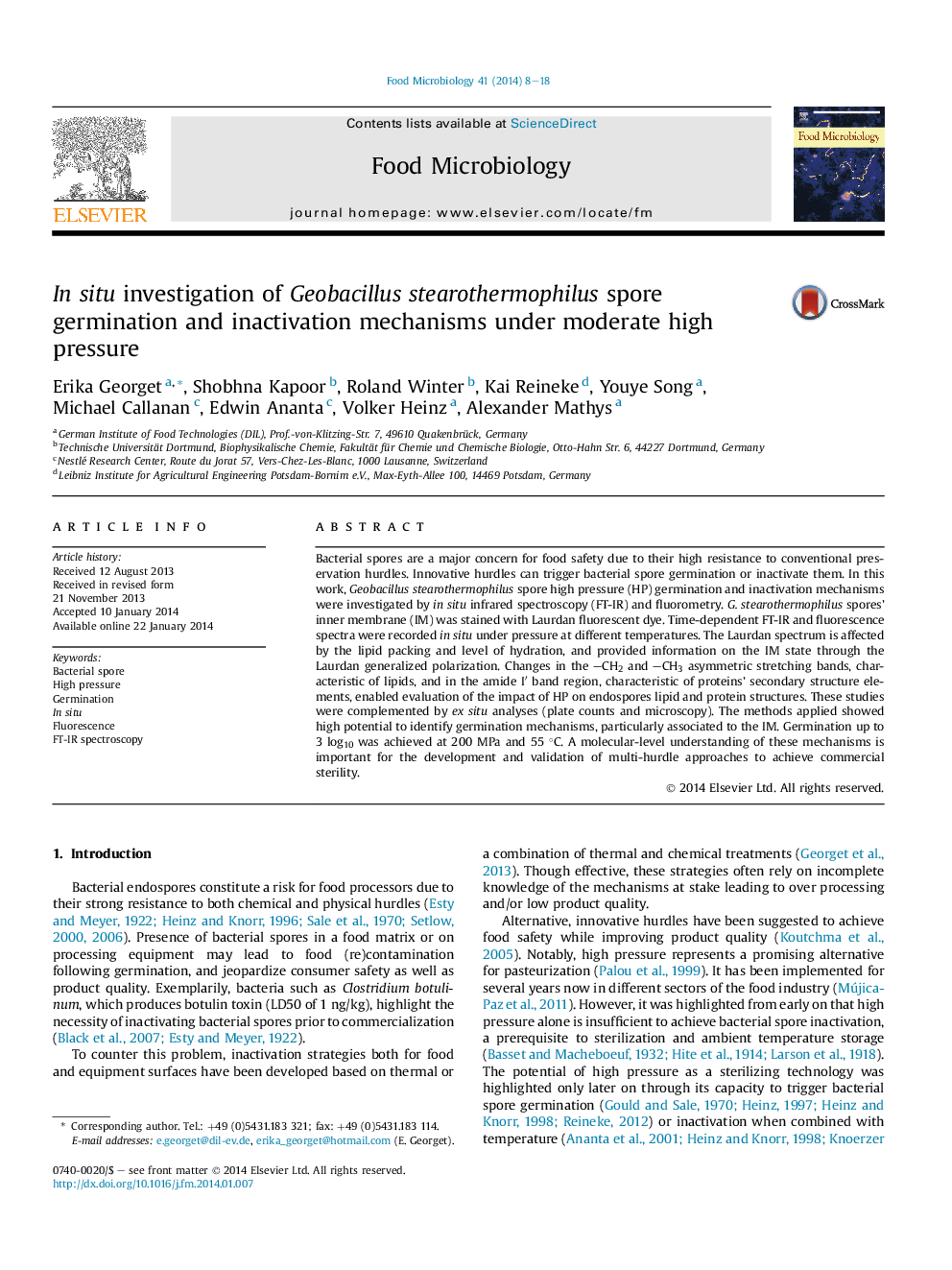| Article ID | Journal | Published Year | Pages | File Type |
|---|---|---|---|---|
| 4362829 | Food Microbiology | 2014 | 11 Pages |
•Bacterial spores are a major concern for commercial sterility and food safety.•High pressure can trigger endospores germination, leading to heat sensitization.•Successful germination up to 3 log10 could be achieved at 200 MPa and 55 °C.•Analytics for in and ex situ studies of high pressure germination were combined.•Germination was associated to a reversible gel phase change in the inner membrane.
Bacterial spores are a major concern for food safety due to their high resistance to conventional preservation hurdles. Innovative hurdles can trigger bacterial spore germination or inactivate them. In this work, Geobacillus stearothermophilus spore high pressure (HP) germination and inactivation mechanisms were investigated by in situ infrared spectroscopy (FT-IR) and fluorometry. G. stearothermophilus spores' inner membrane (IM) was stained with Laurdan fluorescent dye. Time-dependent FT-IR and fluorescence spectra were recorded in situ under pressure at different temperatures. The Laurdan spectrum is affected by the lipid packing and level of hydration, and provided information on the IM state through the Laurdan generalized polarization. Changes in the –CH2 and –CH3 asymmetric stretching bands, characteristic of lipids, and in the amide I′ band region, characteristic of proteins' secondary structure elements, enabled evaluation of the impact of HP on endospores lipid and protein structures. These studies were complemented by ex situ analyses (plate counts and microscopy). The methods applied showed high potential to identify germination mechanisms, particularly associated to the IM. Germination up to 3 log10 was achieved at 200 MPa and 55 °C. A molecular-level understanding of these mechanisms is important for the development and validation of multi-hurdle approaches to achieve commercial sterility.
